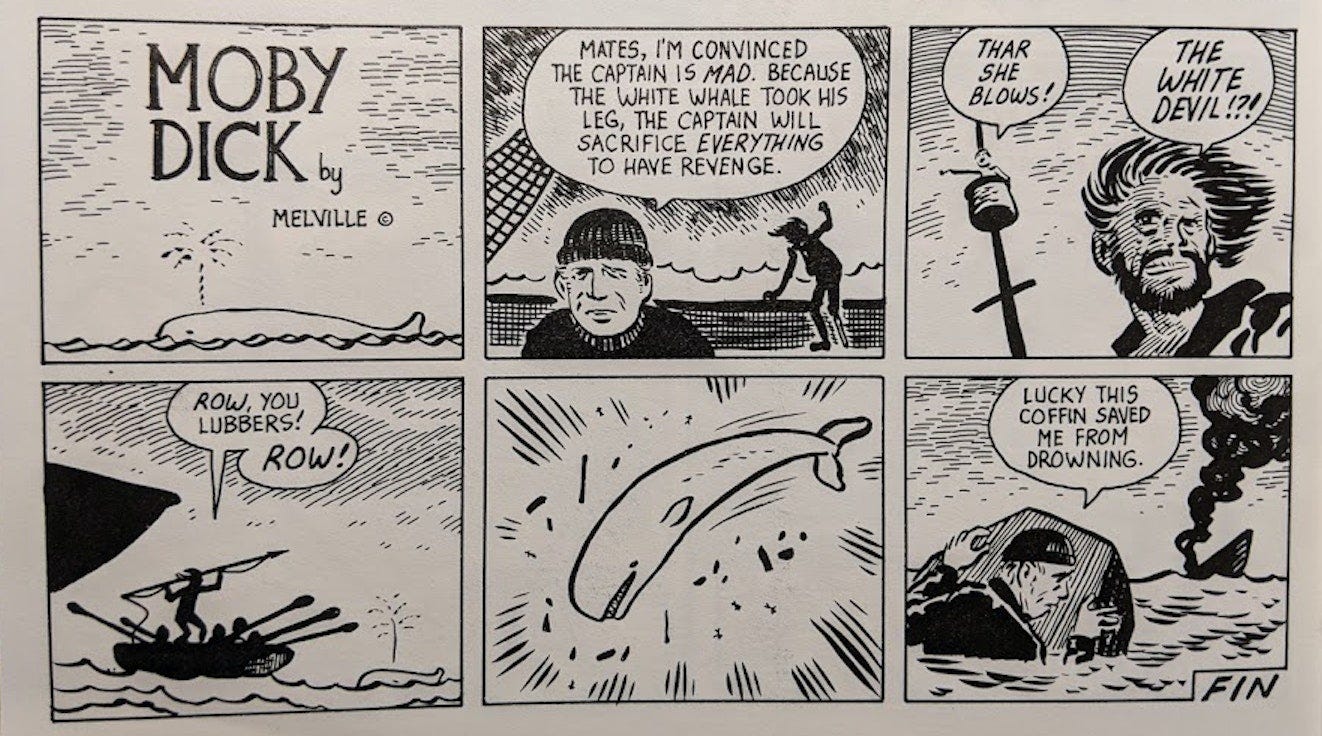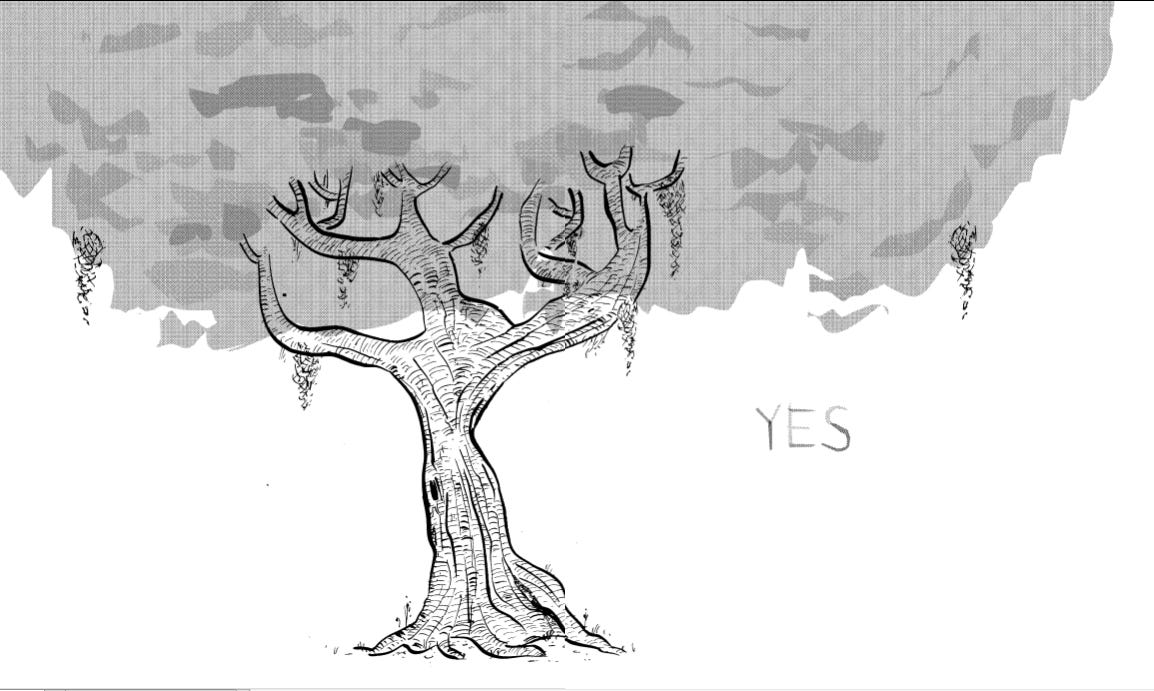Just getting our brains/minds/etc. around our idea can alone be daunting. Here’s what we can try!
First, can you put your idea into one sentence?
Boiling it down to one sentence can be extremely valuable to us in staying on track, and in understanding what we are after.
With my memoir, Rosalie Lightning, that sentence was roughly, “A couple travel far to try to come to acceptance of the death of their daughter.”
Can you put it into one word?
Boiling it down to one word is a great exercise to try now and then to help us identify other charged ideas, but also to keep us on track.
In my case, the single word was already in my sentence: “Acceptance.”
Try few different formats
As you develop your idea further and build out the framework, put your WHOLE STORY into these formats:
1- A Four panel comic strip
Think it can't be done? Here's Moby Dick in 5 panels! (Ok 5, plus a title panel (And I might have thrown in more of the beginning sequences.))
In my case, I didn’t try this exercise, but here’s what I would identify as the four panels
child playing in grass, mimicking growing a tree
2nd panel all black, or maybe really scratchy mostly black
sitting with a woman, our eyes blackened out, her saying “it happened to us too.”
The single tree growing with the word yes (this in fact was the final image of the real book.)
And the word “yes” relates very much to my single word from the above exercise, “Acceptance".”
2. 8 page mini-comic (This could be a single panel per page or something more.)
3- A series of Index cards with each plot point on one.
Doing this exercise will help you understand that the story and the format (4-panel, 8-page, stack of index cards) are separate.
More importantly, it quickly helps you learn how to edit, and to recognize the important parts that are missing. Write those down on your outline, and make sure they go into your full story.
Here’s Tom’s video about putting your ideas on the wall… This is when you are still trying to figure out the story.
How do you try to locate or refine your idea(s)? Tell us!
Thanks for being here!







How to construct a panel and a page are probably the hardest thing to learn and this is a clear explanation of how the eye travels around a picture which is really appreciated. Thanks for sharing it.
Shell 🐚 YES and Hallelujah 🙌🏽 to this conversation! I love you 💗 (because it’s easy to love people who care about the same things I do – curbing the inner competing Monkey voices, so we can show up for our dance with the Muse.) Y’all ROCK and I look forward to more sequential goodness!